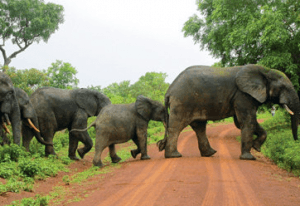Illicit financial flows from wildlife trafficking reach $23b yearly – GFI
 The crime of trafficking in wildlife is not only posing threats to wild fauna and floral, but it has also become a major source of illicit finance across the world, a forthcoming report by the Global Financial Integrity shows.
The crime of trafficking in wildlife is not only posing threats to wild fauna and floral, but it has also become a major source of illicit finance across the world, a forthcoming report by the Global Financial Integrity shows.
According to the report, to be released in November 2016, an estimated $5 to $23 billion is generated every year from the illegal trade in wildlife.
A 2012 report by the advocacy group, World Wildlife Fund (WWF), which noted that the illegal wildlife trade is a threat to national security, estimated that $19 billion a year is generated from the crime.
The report further indicated that the illicit trade is perceived by organized criminals to be high profit and low risk and it is the fourth largest illegal global trade after narcotics, counterfeiting, and human trafficking.
A press release by the GFI issued and copied to ghanabusinessnews.com, raises urgent concerns about the crime and states that halting the illicit wildlife trade is an urgent issue, not just for species conservation but for development and security as well.
“Community-based ecotourism is a powerful tool that can benefit development, yet wildlife trafficking robs local communities of their resources. Furthermore, profits from the wildlife trafficking finance corruption, violence, and instability,” the release said.
The GFI points out that in 2015, at least 1,342 rhinos were poached throughout Africa for their horns, representing a retail value of more than $490 million.
“Criminals use a variety of means—from anonymous shell companies to trade misinvoicing—to smuggle goods and launder profits. Complex, anonymous multinational corporate structures hide beneficial ownership, making it extremely difficult for authorities to investigate and prosecute those responsible,” it added.
The Policy Analyst of GFI, Channing May was quoted as saying, “Per kilo, the retail profits for some wildlife products can be equal to or even greater than the equivalent amount of cocaine or heroin, yet the legal penalties are considerably more lenient. The ugliness of poaching trades on the beauty of nature, and this trade is lucrative. No country is untouched.”
A report by the United Nations World Trade Organisation (UNWTO) in 2012 says many of the 50 million international tourists visiting Africa each year are drawn by the continent’s unparalleled wildlife and natural scenery, a clear indicator of the economy impact of the illicit trade in wildlife and the potential risk to tourism in Africa.
Incidentally, tourism is one of the most effective ways to preserve Africa’s national parks and protected areas while creating jobs and income for local communities, the UNWTO believes.
A writer, Bryan Christy, said in 2013 that about 50,000 elephants are killed yearly in Africa.
He said 62 per cent of forest elephants have been killed in the last 10 years, with about $50 million illegal ivories seized. He said the phenomenon is serious in Central, Western and Eastern Africa.
Meanwhile, Ghana’s Minister of Lands and Natural Resources, Nii Osah Mills has raised the alarm that the country’s forest and wildlife resources are under intense encroachment and destruction with illegal settlements, farming, poaching, mining and chainsaw operations.
By Emmanuel K. Dogbevi
Copyright © 2016 by Creative Imaginations Publicity
All rights reserved. This news item or any portion thereof may not be reproduced or used in any manner whatsoever without the express written permission of the publisher except for the use of brief quotations in reviews.
